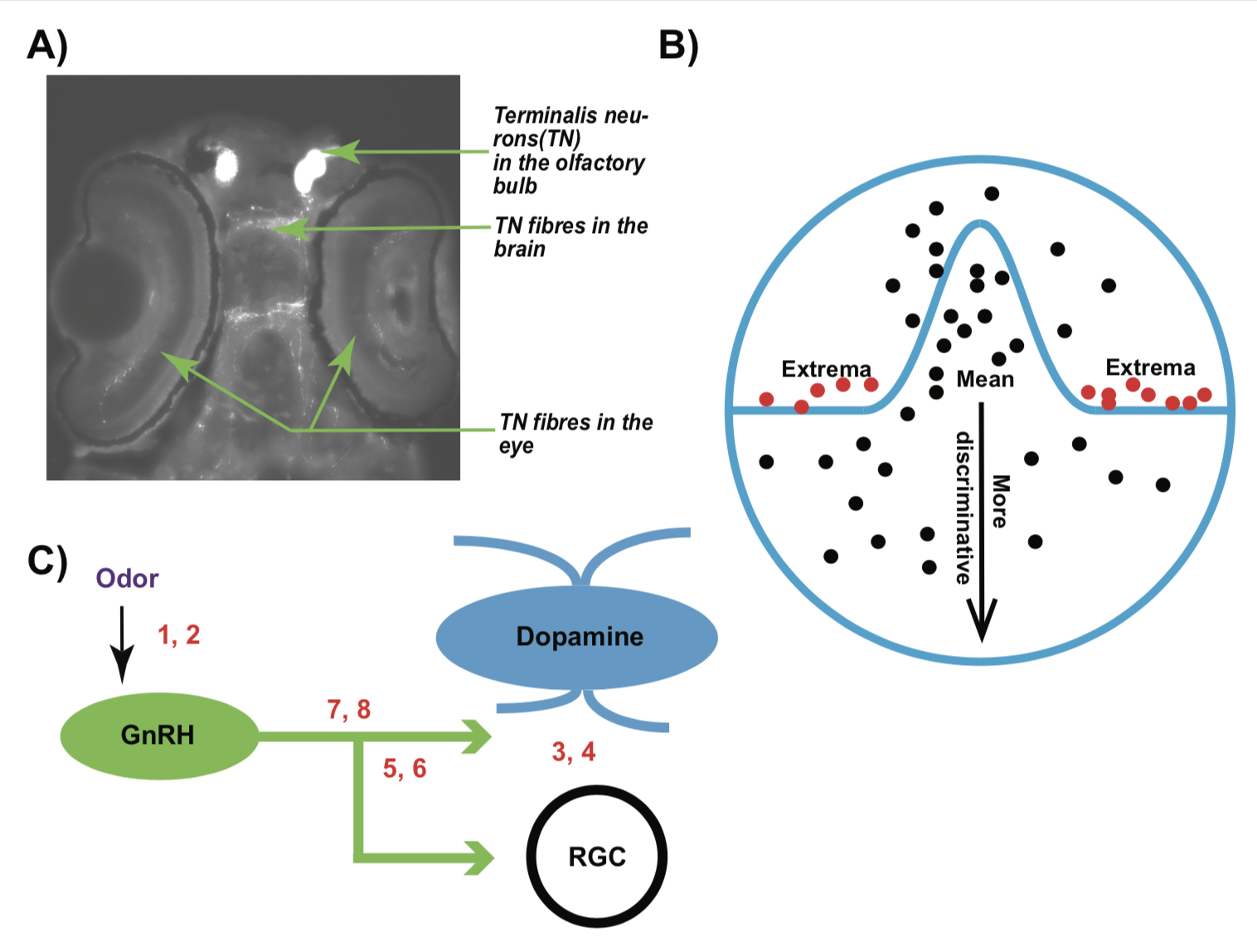Computational Models of Zebrafish Sensory Integration
Fall 2016 - Fall 2020
Description
We propose a computational model of vision that describes the integration of cross-modal sensory information between the olfactory and visual systems in zebrafish based on the principlesof the statistical extreme value theory. The integration of olfacto-retinal information is mediated by the centrifugal pathway that originates from the olfactory bulb and terminates in the neural retina. Motivation for using extreme value theory stems from physiological evidence suggesting that extremes and not the mean of the cell responses direct cellular activity in the vertebrate brain. We argue that the visual system, as measured by retinal ganglion cell responses in spikes/sec, follows an extreme value process for sensory integration and the increase in visual sensitivity from the olfactory input can be better modeled using extreme value distributions. As zebrafish maintains high evolutionary proximity to mammals, our model can be extended to other vertebrates as well. This work shows promise for applications in machine learning and neuromorphic systems.
The research was funded by the Department of Defense (Army Research Laboratory) under the contract W911NF-18-1-0292.
Publications
- "An Assistive Computer Vision Tool to Automatically Detect Changes in Fish,, , , , ,
Behavior In Response to Ambient Odor,"Scientific Reports,January 2021.[pdf] [code][bibtex]@article {Banerjee_SciRep2021,
author = {Banerjee, Sreya and Alvey, Lauren and Brown, Paula and Yue,
Sophie and Li, Lei and Scheirer, Walter J.},
title = {An Assistive Computer Vision Tool to Automatically Detect
Changes in Fish Behavior In Response to Ambient Odor},
year = {2021},
volume = {11},
number = {21},
journal = {Scientific Reports}
}
- "An Extreme Value Theory Model of Cross-Modal Sensory Information Integration in,,,
Modulation of Vertebrate Visual System Functions,"Frontiers in Computational Neuroscience,February 2019.[pdf][bibtex]@article{Banerjee423038,
author = {Sreya Banerjee and
Walter Scheirer and
Lei Li},
title = {An Extreme Value Theory Model of Cross-Modal Sensory Information Integration in
Modulation of Vertebrate Visual System Functions},
journal = {Frontiers in Computational Neuroscience},
volume = {13},
month = {February},
year = {2019},
pages = {3}
}
